LESSON 2 DENTITION FINAL EXAM
1/45
There's no tags or description
Looks like no tags are added yet.
Name | Mastery | Learn | Test | Matching | Spaced |
|---|
No study sessions yet.
46 Terms
ONE
teeth first erupted are replaced by _____ stronger, second set of teeth
incisors
Identify the general type of tooth the arrow is pointing to

canine
Identify the general type of tooth the arrow is pointing to
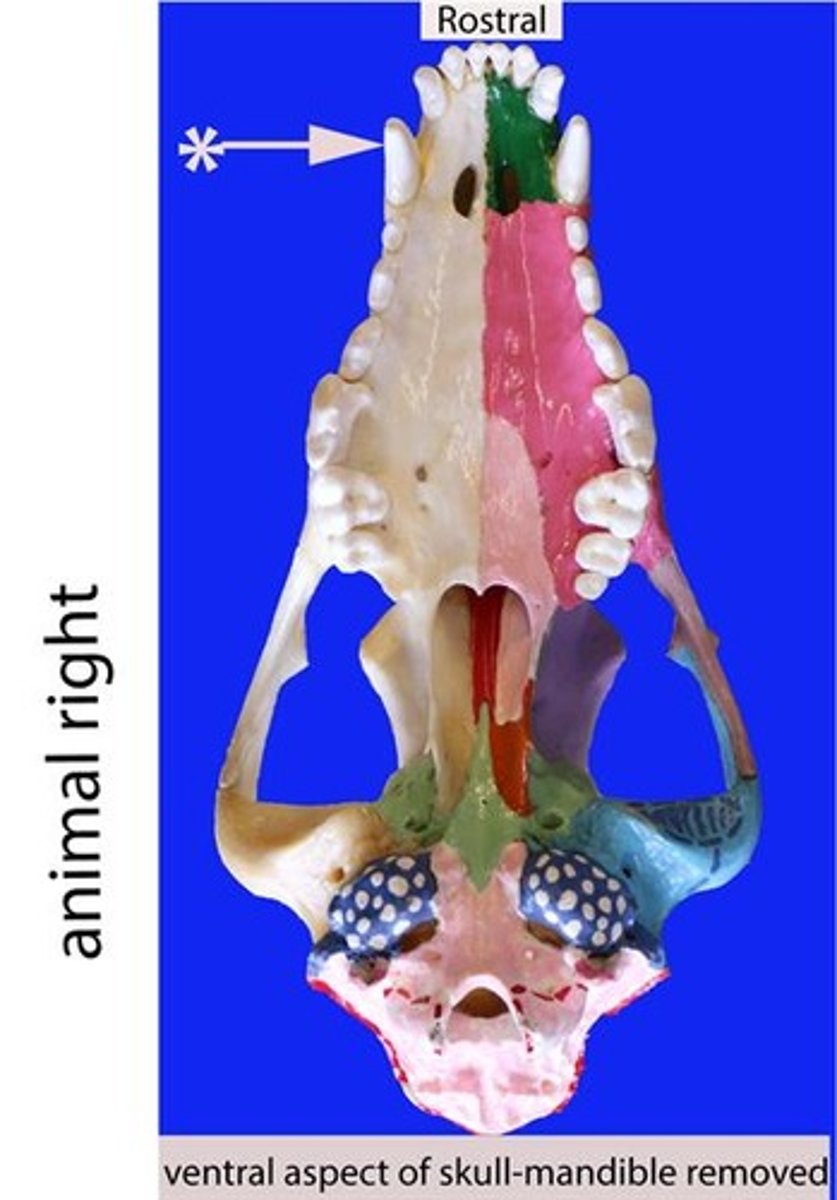
premolar
Identify the general type of tooth the arrow is pointing to
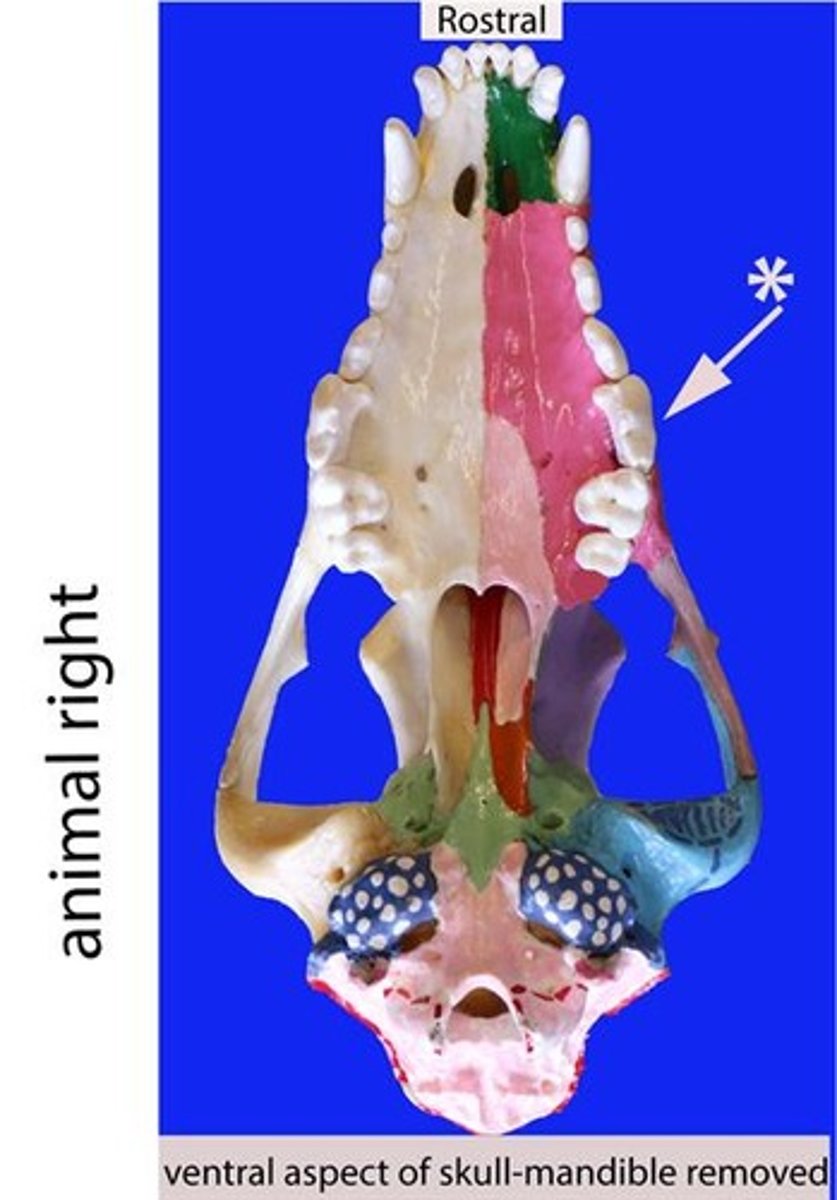
molar
Identify the general type of tooth the arrow is pointing to

premolar
Identify the general type of tooth the arrow is pointing to
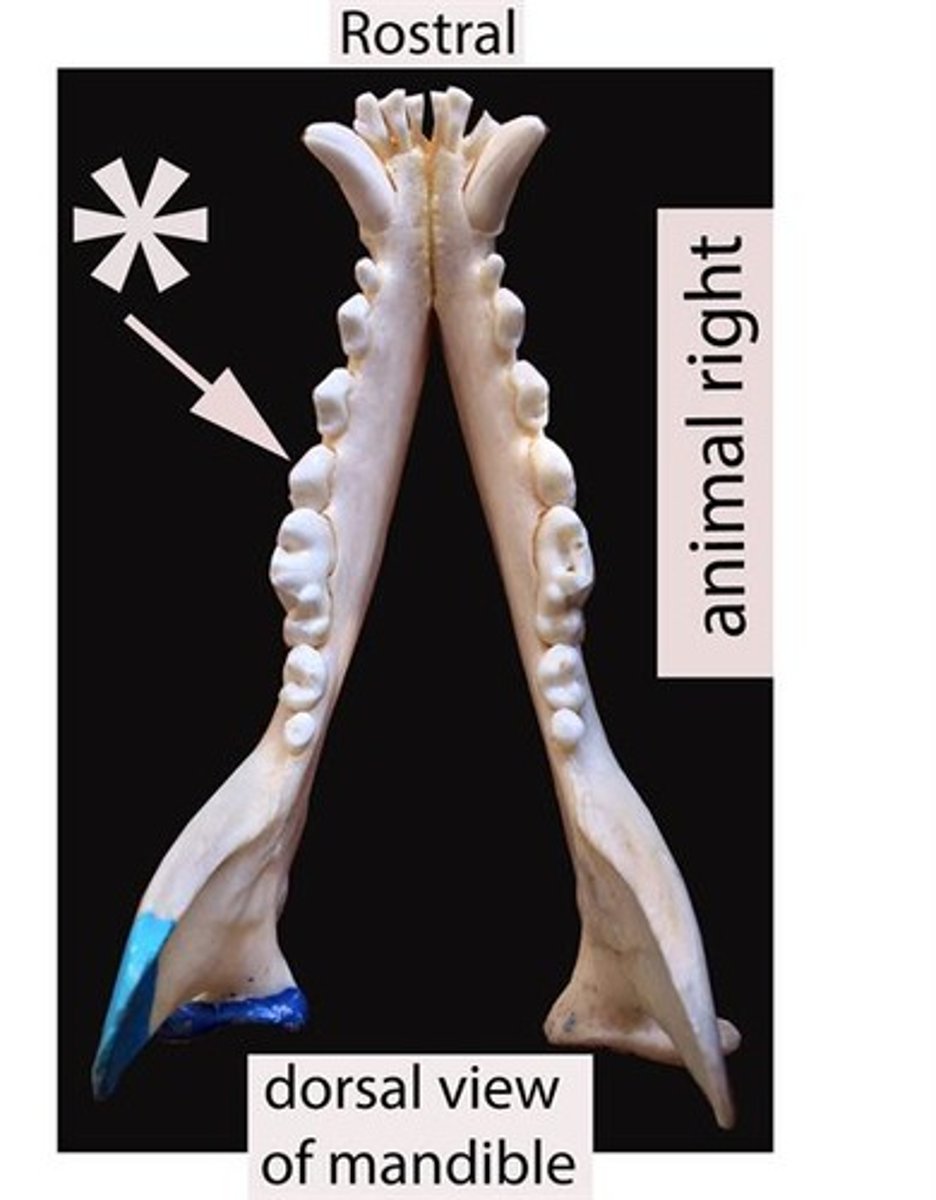
molar
Identify the general type of tooth the arrow is pointing to
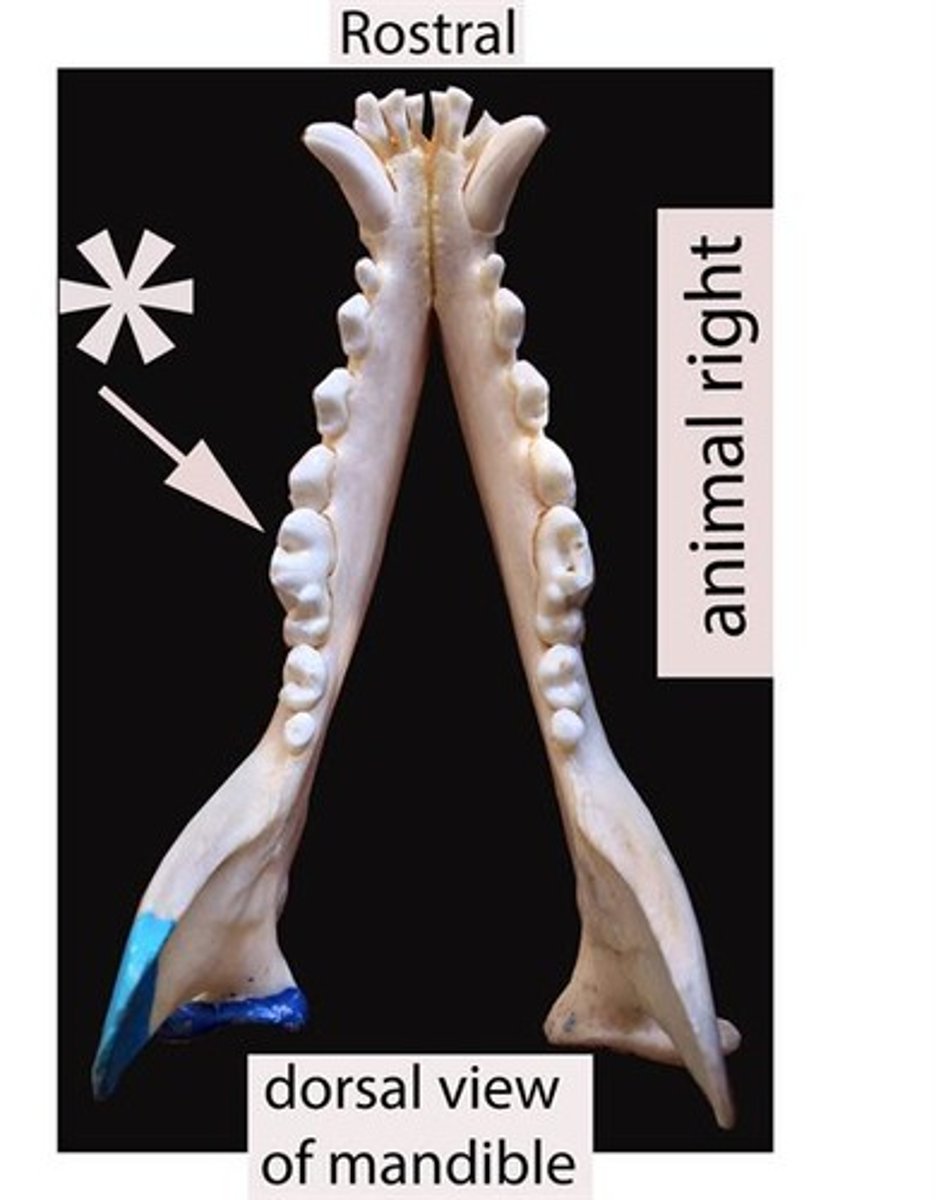
incisors
What type of teeth are found in the incisive bone
canines
premolars
molars
What type of teeth are found in the maxillary bone?
premolars and molars
The term "cheek teeth" refers to which teeth?
incisors
Identify the type of teeth shaded.

premolars
Identify the type of teeth shaded.

canines
Identify the type of teeth shaded.

molars
Identify the type of teeth shaded.
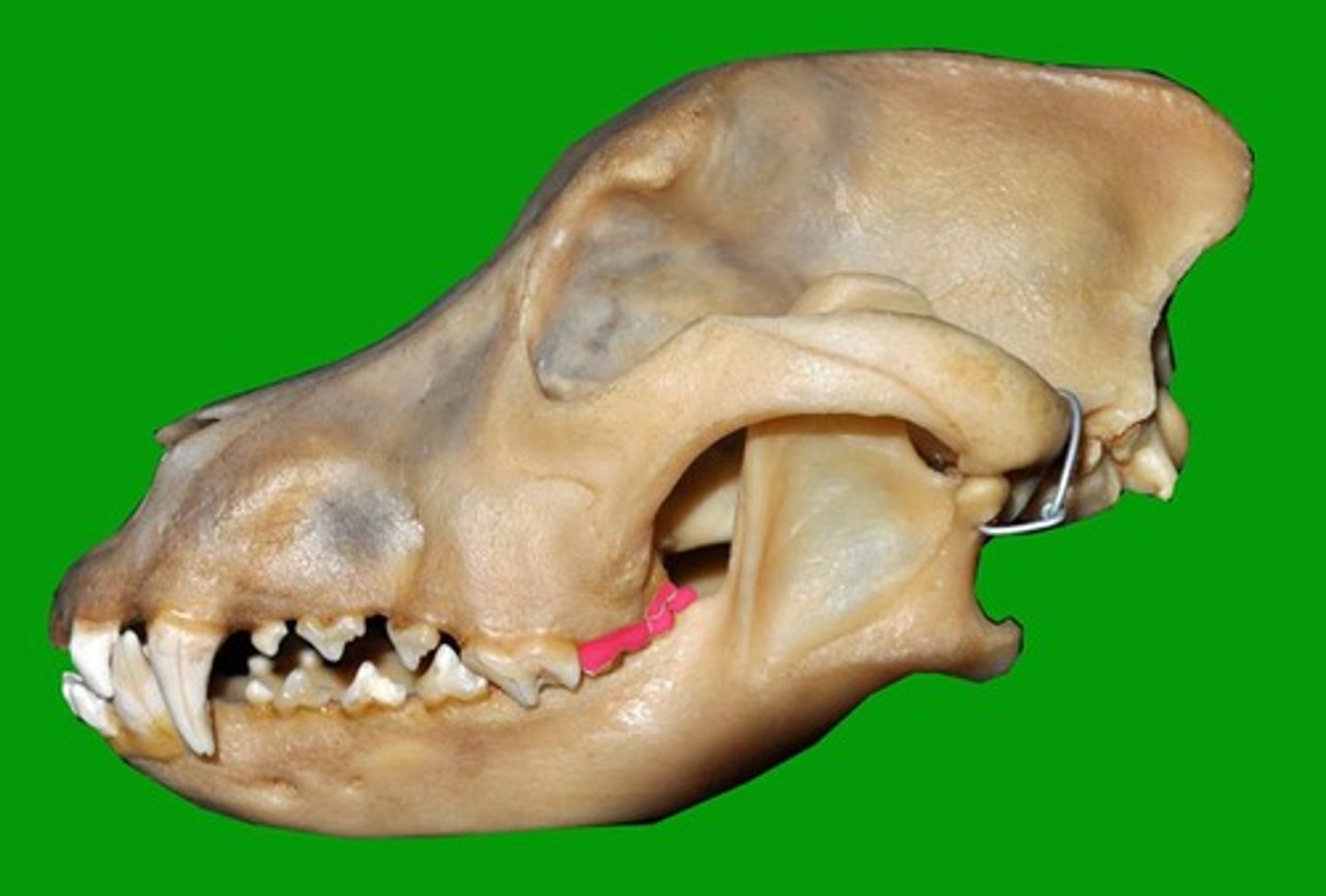
premolar
Identify the type of tooth indicated by the arrow.

molar
Identify the type of tooth indicated by the arrow.
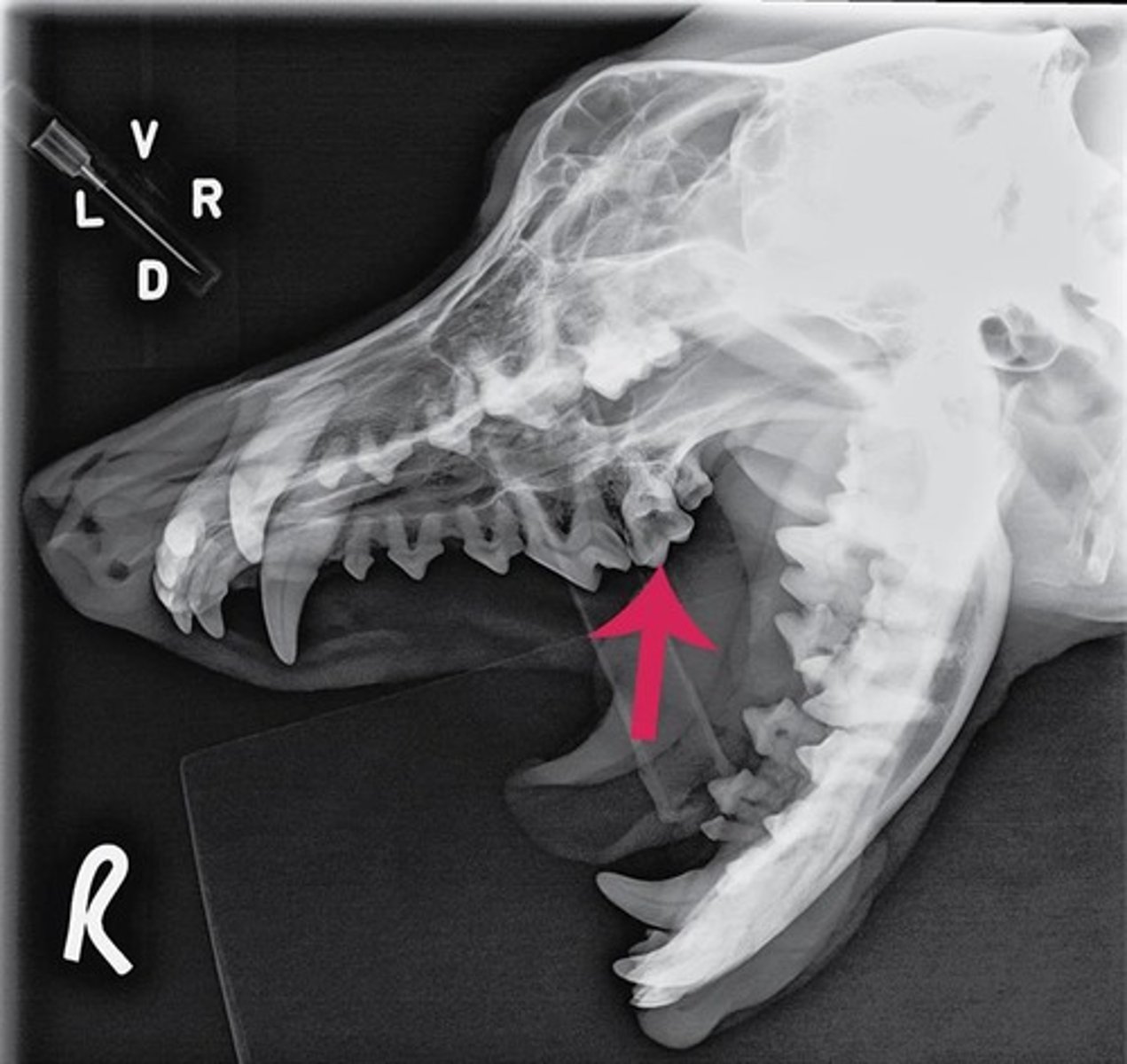
vestibular
buccal
facial
Identify the tooth surface the red line being pointed to by an arrow represents. There are three terms used for this surface. Supply all three.

lingual
Identify the tooth surface the red line being pointed to by an arrow represents.

mesial
On the first molar, identify the surface the red line being pointed to by an arrow represents.

distal
On the first molar, identify the surface the red line being pointed to by an arrow represents.
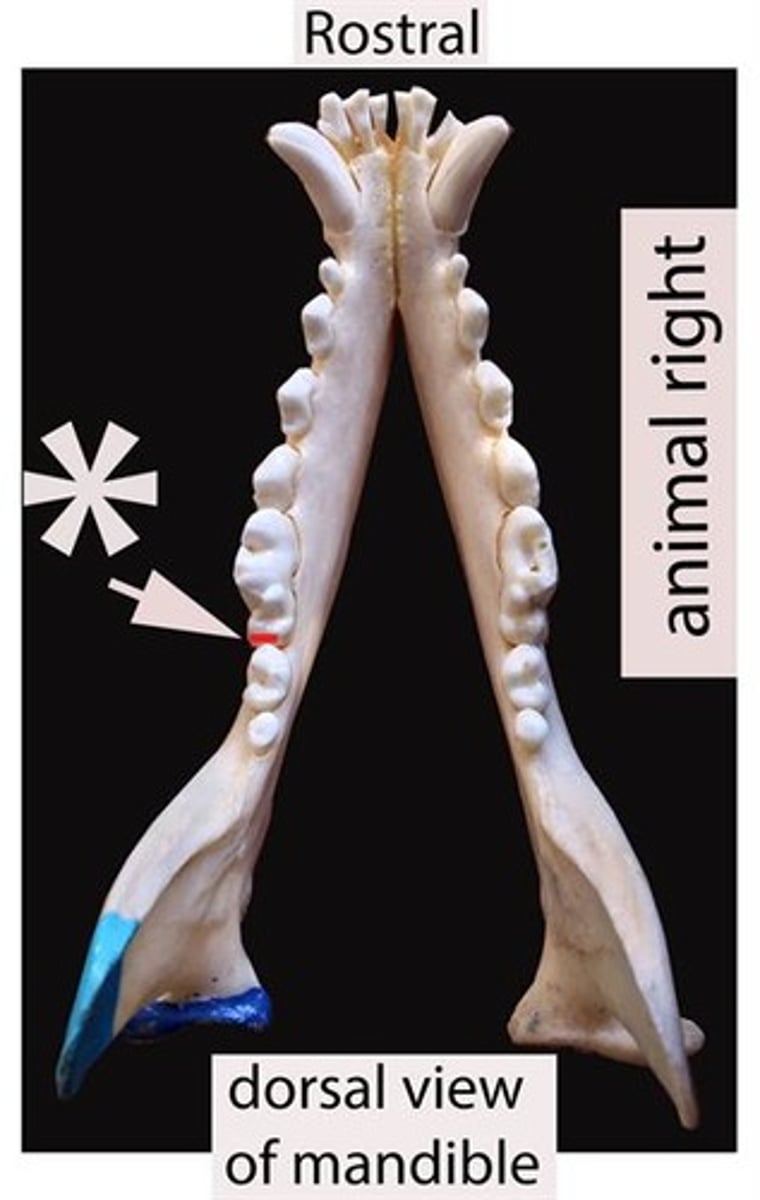
masticatory or occlusal
The "working surface" of the tooth is referred to as the _____________ surface
contact surfaces
When the DISTAL and MESIAL surfaces come into contact they are referred to as ______________
ZERO
How many teeth does the newborn pup have?
TWENTY EIGHT
Normal TOTAL number of temporary teeth in the dog
FOURTY TWO
Normal TOTAL number of permanent teeth in the dog
I3-C1-P4-M2 / I3-C1-P4-M3 = 42
What is the dog formula for permanent dentition?
SIX
Total number of permanent incisors, upper arch, dog
EIGHT
Total number of permanent premolars, upper arch, dog
FOUR
Total number of permanent molars, upper arch, dog
EIGHT
Total number of permanent premolars, lower arch, dog
SIX
Total number of permanent molars, lower arch, dog
SIX
Total number of permanent incisors, lower arch, dog
I3-C1-P3 / I3-C1-P3 = 28
What is the dog formula for temporary dentition?
molar
What type of teeth are lacking in the milk set?
crown
Identify the part of the tooth encircled.
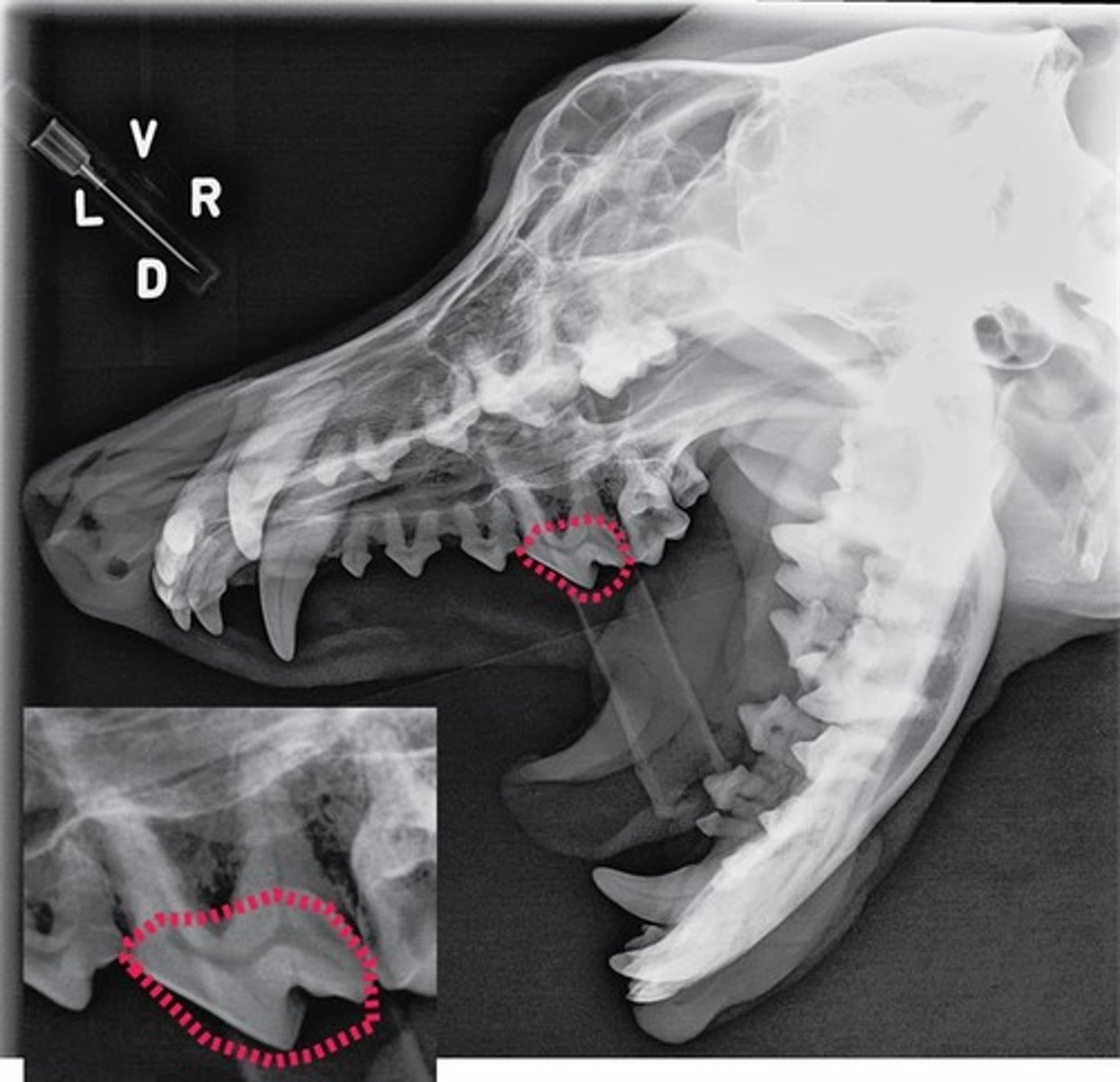
root
Identify the part of the tooth outlined.

neck
The red-hashed line represents what general part of the tooth?

enamel
What compound covers the external part of the tooth outlined?
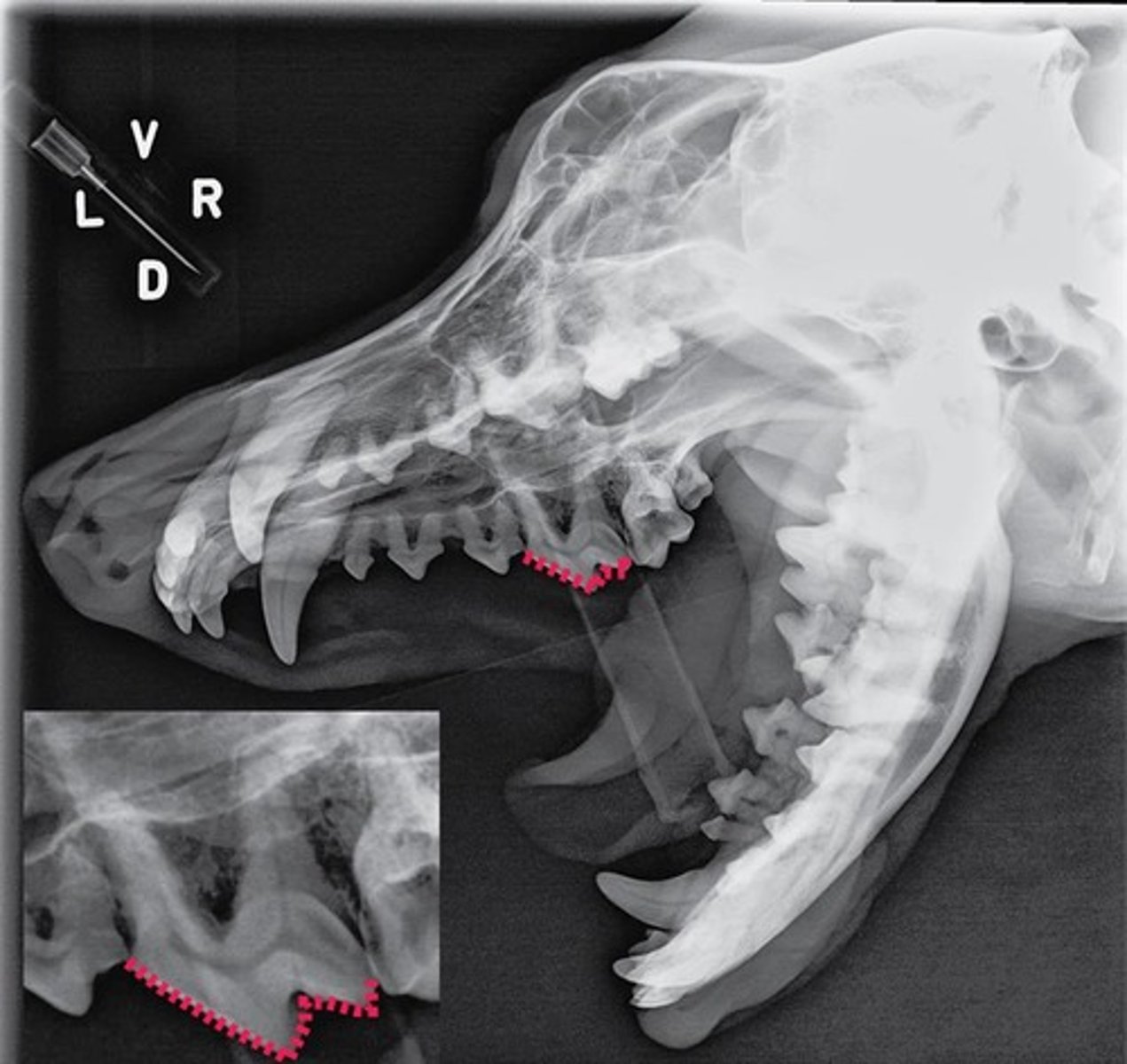
cement
What compound covers the external part of the tooth outlined?
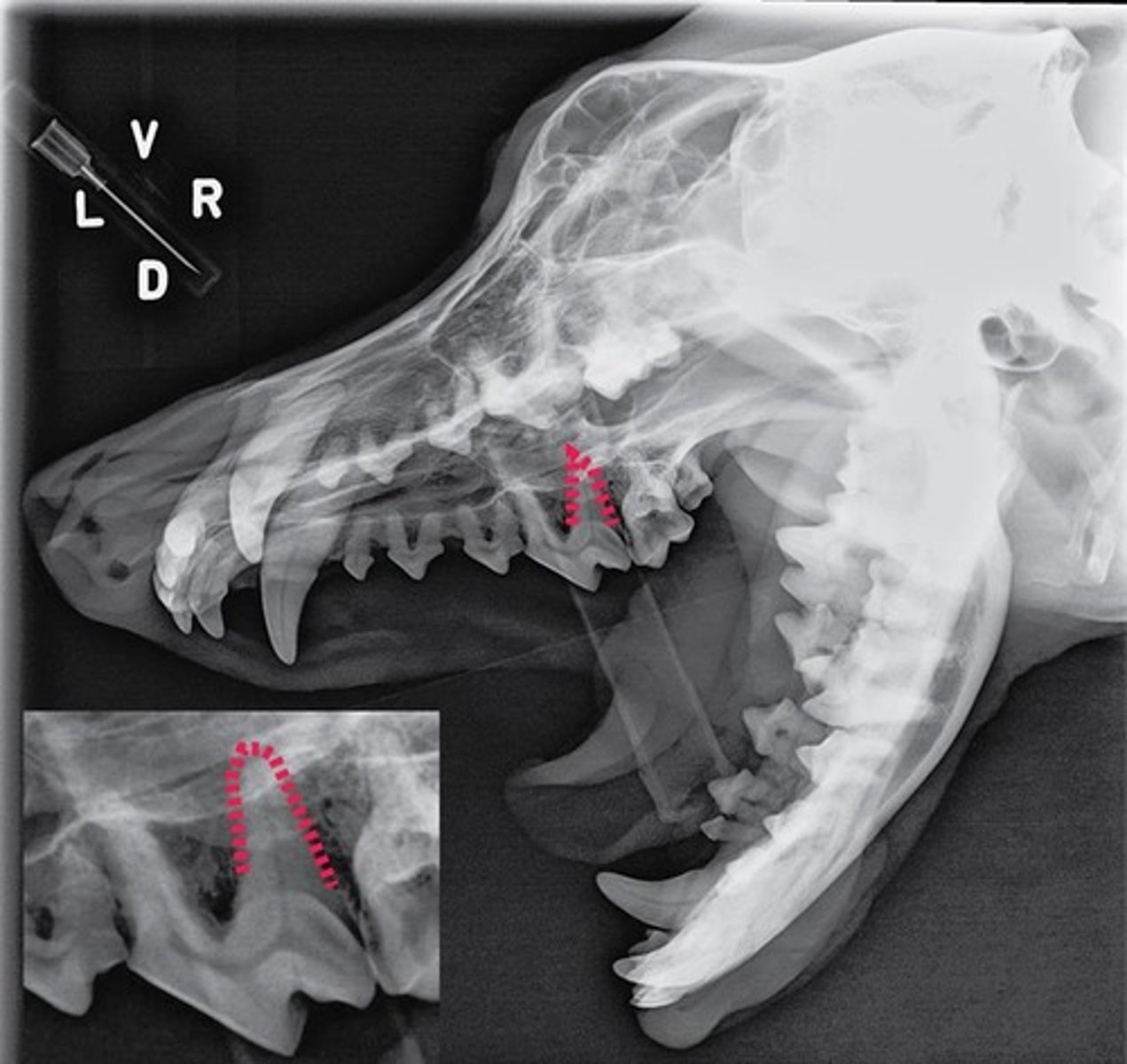
sockets
Term for the bony "openings" in the mandible and skull that the roots fit into
PERIODONTAL LIGAMENT
Term for the specialized structure that fastens the root of the tooth into its SOCKET.
dentin
The arrows are pointing to what substance that makes up the bulk of the internal tooth, deep to the enamel and cement?
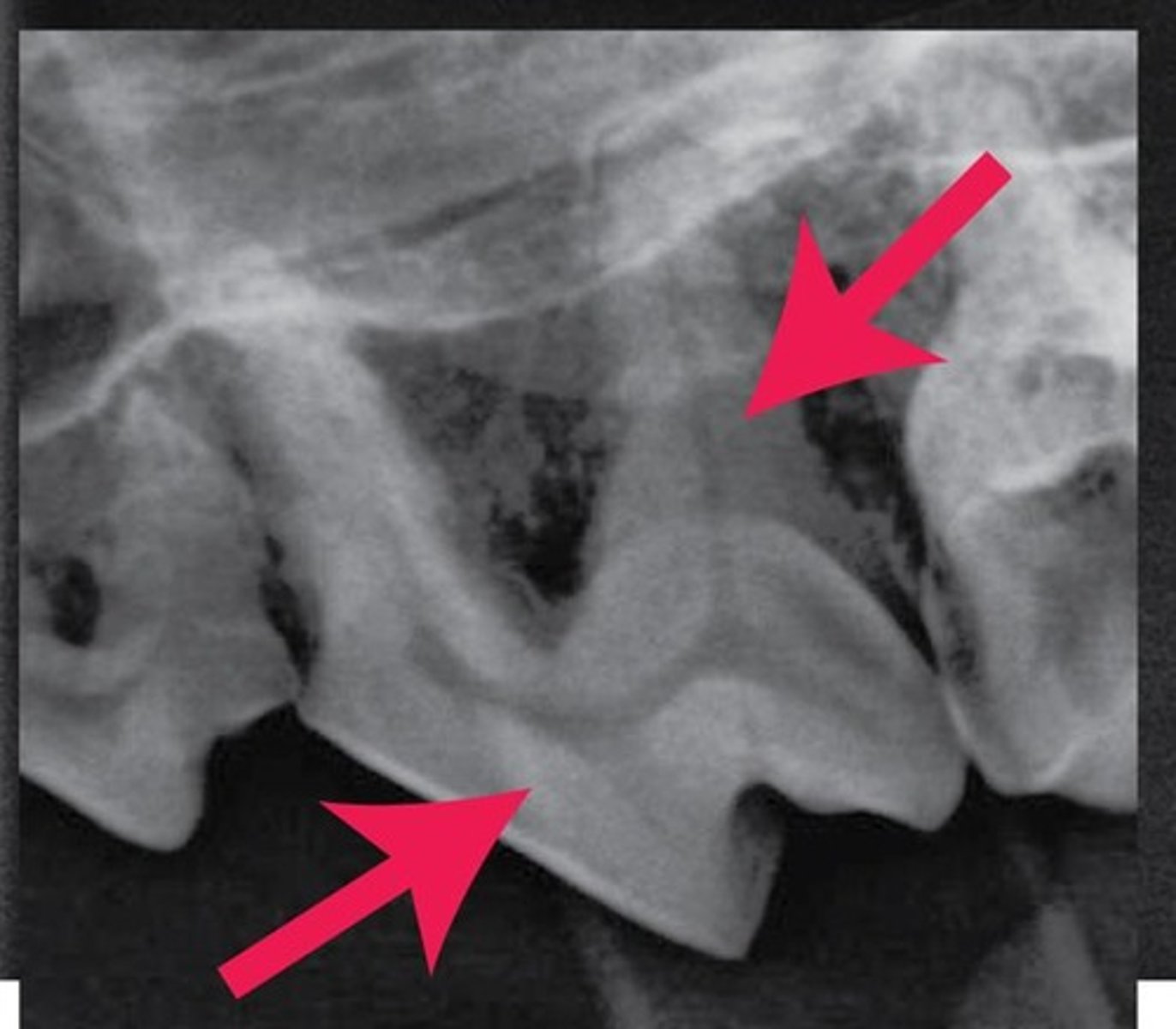
dental cavity
pulp
The arrow is pointing to what "space" found within the tooth? Also, what is the term for the "substance" found within this space?
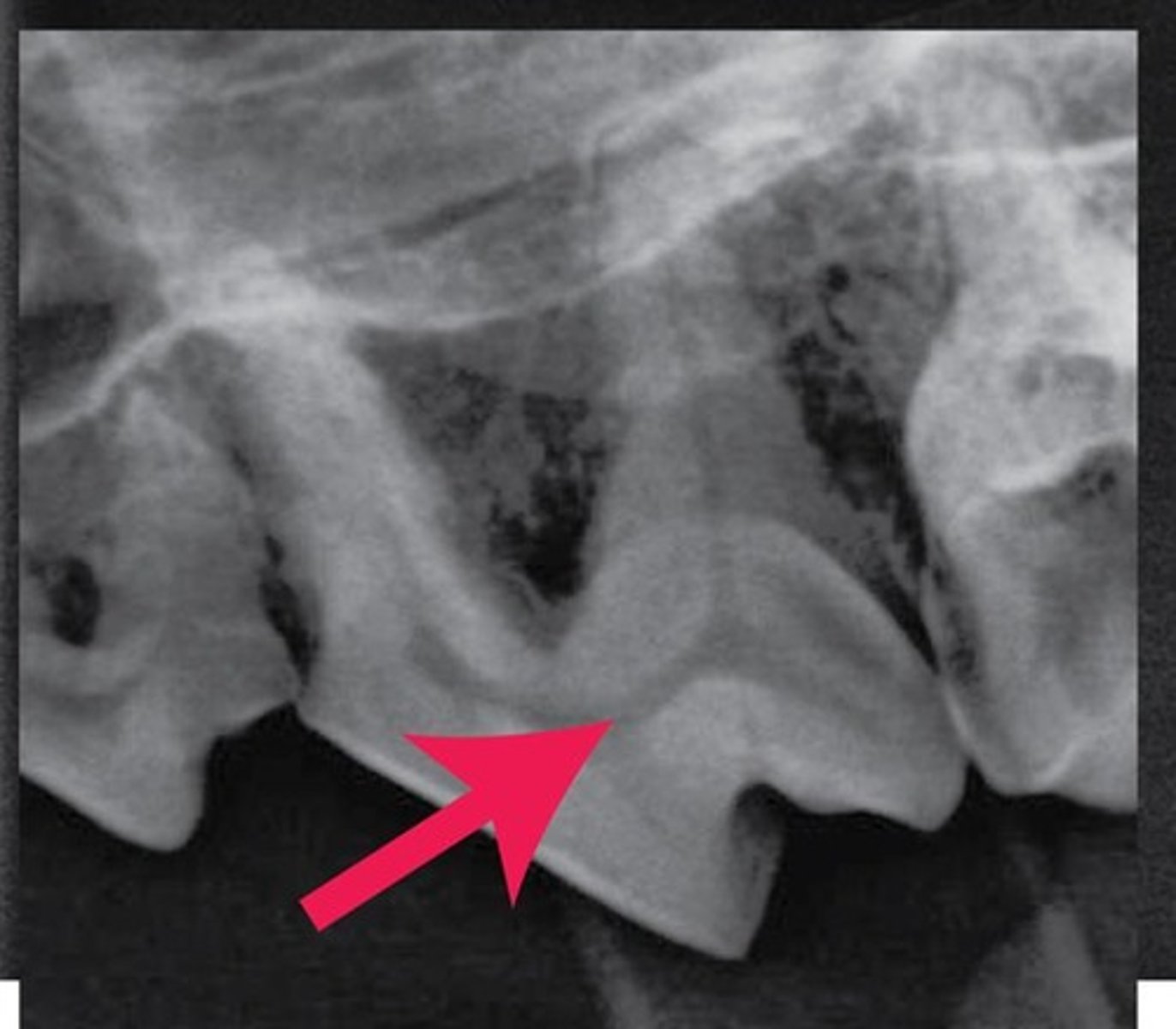
vessels
nerves
lymphatics
What important "structures" are found in the pulp?
palatal
The arrow is pointing to what tooth surface?
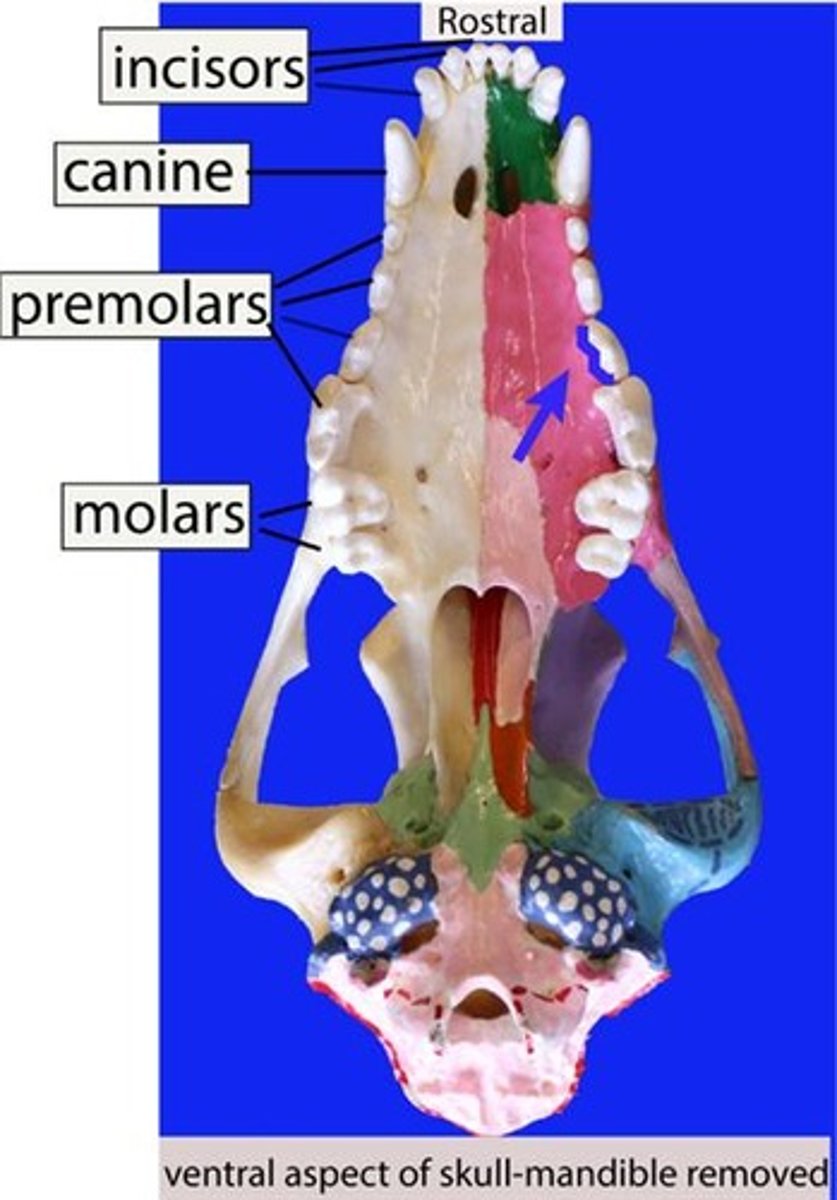
Premolars
Molars
Multiple roots
What type of teeth are the most difficult to extract? Why?